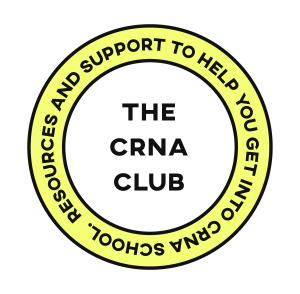Getting into CRNA school is more competitive than ever. GPAs are getting more and more competitive, people have laundry lists of certifications, as well as competitive science grades. It's important to show the admissions committee that not only are you a strong academic, but you are a well-rounded applicant. A big way to do that, is to be a leader, and an innovator on your unit. Read on if you want to learn about 3 resume boosters or leadership projects that you can do in your ICU, to make you a stronger, stand-out CRNA school applicant.
1. Create a Checklist
Creating a checklist is a great way to lower stress in critical situations by having a checklist that you can reference in emergency situations. A great checklist to create would be something like an emergency intubation checklist. We all know that feeling when you have a patient who all of a sudden needs to be emergently intubated or even worse, they pull out their ET tube. You’re scrambling to call for help staring at their oxygen saturation, while paging the RT - we’ve all been there.
When somebody shows up to your bedside to re-intubate your patient you want to have everything ready. What about the suction? Their potassium level? Do you have a glidescope available? These would be great things to put on a checklist.
2. Create a perioperative Handoff Sheet
A great project to do on your unit would be one that connects the world of the ICU with the world of anesthesia. This shows the admissions committee that not only are you willing to create a helpful tool to use in your ICU, but you also have an understanding of how your knowledge overlaps with the role of a CRNA.
If you shadowed a CRNA, you'll know that there are certain things that the nurse anesthetist looks for when they go to take a patient to the operating room. We always need a working IV to push our induction drugs and we always make sure the patient has had nothing to eat or drink, for example (NPO guidelines, anyone?).
Some other things that we often check are the patient's coags, particularly if the patient is on a blood thinner. Sometimes the surgeon will also request that the patient have a type and screen drawn, this is best if the lab is collected before the patient gets taken to the operating room. Also, you’ll want to make sure you have a full oxygen tank for transport to the ICU.
When the patient comes back from the operating room the CRNA will likely give you a report. It would be wonderful to make a perioperative handoff sheet that you could easily reference if you're constantly getting post-operative patients, especially if they're the same types of patients. How much fluid was given, blood loss, new lines, what blood products were given, any labs drawn? While the operative team may frequently give you this information, having a handoff sheet will ensure that you don’t waste time fishing in the chart, and you have a safe handoff of the patient.
3. Create a Visual Aid
Creating a visual aid for your unit would be incredibly helpful. If you are constantly getting patients who are receiving nerve blocks, it would be excellent to do a project on your unit that revolves around assessing a patient's motor or sensory function. While you might not be getting fresh knee replacements, you may be getting patients who have had a thoracotomy with an intercostal block, for example. Dermatomes, anyone? Given that regional anesthesia is such a large part of our anesthetic training showing an interest in nerve blocks, would really make you stand out in the admissions committee’s eyes.
Yep, looking at you, CRNA school applicant who said they were interested in opioid-sparing techniques and multimodal anesthesia!
Overall, if you are looking to make up for other areas of your resume that may be lacking, doing a project on your unit will not only genuinely help your colleagues, but it will show the CRNA school admissions committee that you are an innovator and willing to go above and beyond to improve patient care. Give one of these a go, and share it with me, I’d love to see!


